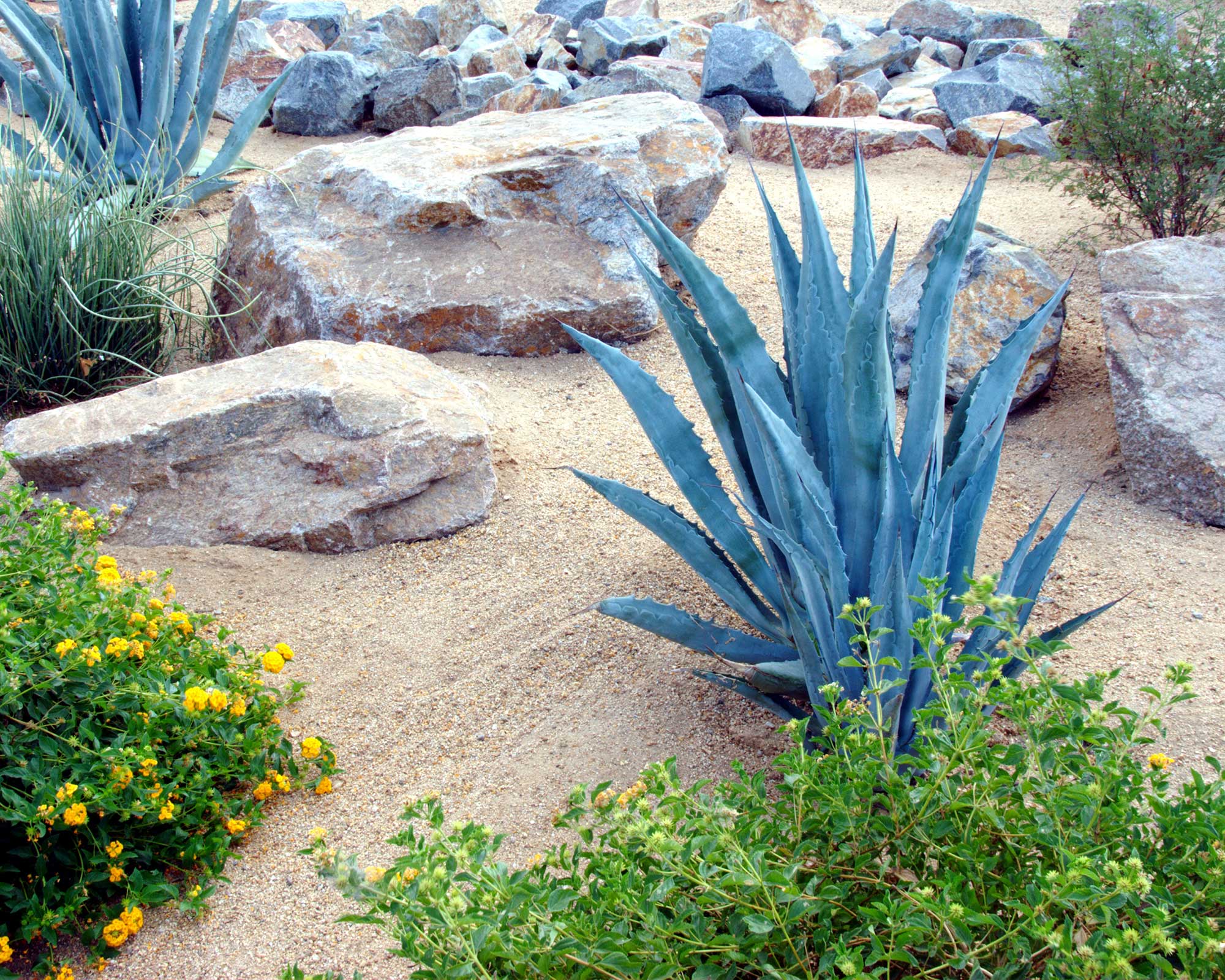How to clean landscaping rocks: simple steps for sprucing up the stones in your plot
Our tips on how to clean landscaping rocks will get these statement features looking as good as new


Learning how to clean landscaping rocks is a good idea if you've used boulders, pebbles, or stones in your yard.
You can achieve all kinds of stylish looks when landscaping with rocks – from statement edging to pretty rockeries filled with alpine flowers. Compared to a lawn or a flower bed, they're super low maintenance, but giving them a spruce from time to time can keep them looking their best.
Some homeowners won't mind a bit of moss or the odd stain for that organic, natural look. But others will prefer to keep these landscaping features looking pristine, particularly if working with a modern theme. If you fall into the latter group, then we're here to help by explaining the different ways to clean rocks of all sizes.

How to clean landscaping rocks in your backyard
Landscaping with boulders creates dramatic structure and form in a garden. And cleaning them couldn't be simpler.
You can start by removing any fallen leaves and debris around them, either by hand or with a leaf blower. Then, give the rocks a good scrub with a garden broom or brush and water from a hose. A drop or two of dish soap will help with any stubborn, oily stains. Just be sure to rinse the rocks thoroughly afterward, advises the experts at Rocks Stones & Pebbles, to avoid leaving unsightly marks.
White vinegar can be useful for removing mold or fungus. Wearing gloves, pour it over the area, scrub well, then rinse. A quarter cup of bleach mixed with two gallons of water can also be used instead of vinegar, says Rocks Stones & Pebbles. Be careful to avoid getting either on any nearby plants, however, as both can damage them.
Alternatively, you could use one of the best pressure washers to clean up your landscape rocks. Keep it on a low setting to avoid chipping the stone and remember to wear protective goggles and suitable clothing to avoid safety risks due to flying debris.

How do you clean smaller landscaping stones or gravel?
Landscaping with gravel has tons of benefits, such as its low maintenance, affordability, and versatility. But it can get dirty over time, which can spoil the aesthetic appeal – particularly if you've chosen a light-toned mix.
For a quick clean, leave the gravel in place and give it a rinse with a garden hose on a low power setting.
For a more intensive clean, you can collect up gravel and other small stones and, using a metal hardware cloth, sift out any loose debris. Then, put them in a large bucket or wheelbarrow, along with plenty of water. Rinse them around, before draining the dirty water back out.
If your wheelbarrow or bucket is old and you don't mind drilling drainage holes into the bottom of it before you add the stones, this will make the job easier.

How do you clean white landscaping stones?
For small, white landscape stones and gravel, the experts at Decorative Aggregates suggest sifting them as above, then lining a wheelbarrow with a tarpaulin and adding the stones before submerging them in 50ml of bleach mixed with approximately 20 liters of water.
Leave for 24 hours before carefully draining the bleach and water mixture into a bucket. Pour it down a drain rather than on the garden to avoid harming your plants. The stones can then be returned to their original place in your plot.

The garden was always a big part of Holly's life growing up, as was the surrounding New Forest where she lived. Her appreciation for the great outdoors has only grown since then. She's been an allotment keeper, a professional gardener, and a botanical illustrator – plants are her passion.
